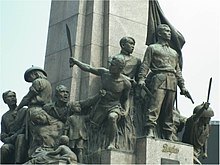
This is the list of the weapons used in the Philippine Revolution.

This is the list of the weapons used in the Philippine Revolution.
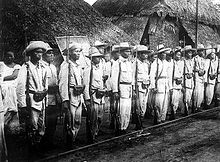
The Philippine Revolution, also called the Tagalog War by the Spanish, [1] was a revolution and subsequent conflict fought between the Katipunan, later the Philippine Revolutionary Army, and the Spanish colonial government.
Orders and circulars were issued covering matters such as building trenches and fortifications, equipping every male aged 15 to 50 with bows and arrows (as well as bolo knives and Guloks, though officers wielded European swords), enticing Filipino soldiers in the Spanish army to defect, collecting empty cartridges for refilling, prohibiting unplanned sorties, inventories of captured arms and ammunition, fundraising, purchasing of arms and supplies abroad, unification of military commands, and exhorting the rich to provide aid to the soldiers. [2] [3]



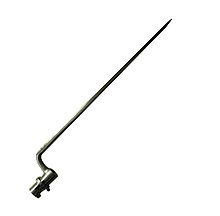

The Katipunan, officially the Kataastaasan, Kagalanggalang na Katipunan ng mga Anak ng Bayan or Kataastaasan Kagalang-galang na Katipunan ng mga Anak ng Bayan, was a Philippine revolutionary society founded by anti-Spanish colonialist Filipinos in Manila in 1892; its primary goal was to gain independence from Spain through a revolution.
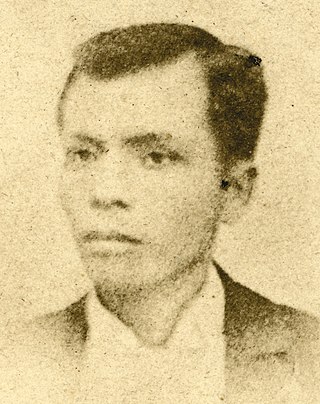
Andrés Bonifacio y de Castro was a Filipino revolutionary leader. He is often called "The Father of the Philippine Revolution", and considered one of the national heroes of the Philippines.
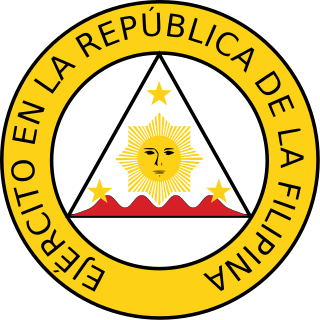
The Philippine Revolutionary Army, later renamed Philippine Republican Army, was the official armed forces of the First Philippine Republic from its formation in March of 1897 to its dissolution in November of 1899 in favor of guerilla operations in the Philippine–American War.

A bolo is a general term for traditional pre-colonial small to medium-sized single-edged swords or large knives of the Philippines that function as both tools and weapons. They are characterized by a curved wide blade that narrows towards the hilt, with pointed or blunt tips. Bolos are a common tool in the Philippines and are often compared to the machete.

The 1896 Philippine Revolution was a conflict waged by the Filipino revolutionaries against the Spanish colonial authorities in an attempt to win the archipelago's independence. It began on August 24, 1896, when the Spanish authorities discovered the Katipunan, an anticolonial secret organization.
Tagalog Republic is a term used to refer to two revolutionary governments involved in the Philippine Revolution against the Spanish Empire and the Philippine–American War. Both were connected to the Katipunan revolutionary movement.
The Pulahan, also known as dios-dios, were the members of a religious revival of Philippine beliefs that developed in the Visayas prior to the Philippine Revolution. At its peak, it numbered around 10,000–15,000 adherents. The movement was severely crippled during the Philippine Revolution after the Philippine Constabulary took over patrols in Samar, when the U.S. military declared the island as "pacified".

Mariano M. Álvarez was a Filipino revolutionary and statesman.
Teodoro Plata was a Filipino patriot, and a co-founder of the Katipunan, the secret society which sparked the Philippine Revolution against Spanish rule in 1896.
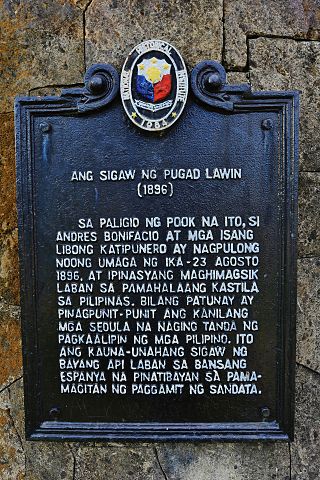
The Cry of Pugad Lawin was the beginning of the Philippine Revolution against the Spanish Empire.
Daniel Tirona y Tria was a Filipino politician. He became infamous for causing divisions within the Philippine revolutionary movement and for insulting and maligning Andres Bonifacio during the Tejeros Convention in 1897.
The Battle of San Juan del Monte also refers as "Battle of Pinaglabanan" took place on August 30, 1896. It is considered as the first major battle of the Philippine Revolution, which sought Philippine independence from Spain. The first battle cry of the Katipunan coincided with the pealing of church bells at nine o'clock on the night of August 29, 1896.

The Battle of Binakayan–Dalahican was a simultaneous battle during the Philippine Revolution that was fought on November 9–11, 1896 that led to a decisive Filipino victory. The twin battle took place at the shores of Binakayan, in the town of Cavite Viejo ; Dalahican and Dagatan in Noveleta; and, to minimal extent, in Imus and Bacoor towns in Cavite, Philippines that lasted for two days before the Spanish army retreated demoralized and in disarray. The result of the battle was the first significant Filipino victory in the country's history.

The Battle of Pasong Tamo was a series of short skirmishes shortly after the Cry of Balintawak between the remaining Katipuneros in Caloocan and the Guardia Civil.

The Battle of Manila of 1896 occurred in Manila in the Spanish colony of the Philippines during the Philippine Revolution. Katipunan under Andres Bonifacio attempted to take the city but the attempt failed, and Bonifacio retreated to the city's outskirts. The Battle of San Juan del Monte was joined a day later when Bonifacio attempted to capture the San Juan's powder magazine, but this too failed.

The Battle of Sambat was the culminating battle of the first revolts of the Katipunan in Laguna. The battle was the final major action for the Katipunan chapter of "Maluningning" ending in the defeat of the rebels and martial law in Laguna province.
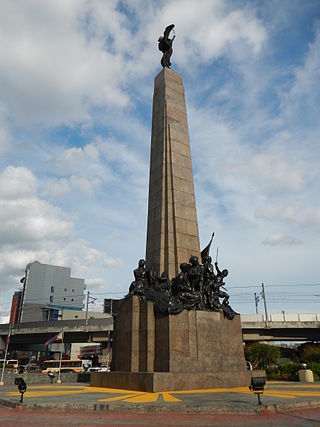
The Andrés Bonifacio Monument, commonly known simply as Bonifacio Monument or Monumento, is a memorial monument in Caloocan, Philippines which was designed by National Artist Guillermo Tolentino to commemorate the Philippine revolutionary Andrés Bonifacio, the founder and Supremo of the Katipunan, who fought for independence from the politically and socially ruthless colonial rule by Spain.
A revolutionary government or provisional government has been declared a number of times in the Philippines, by various insurgent groups.